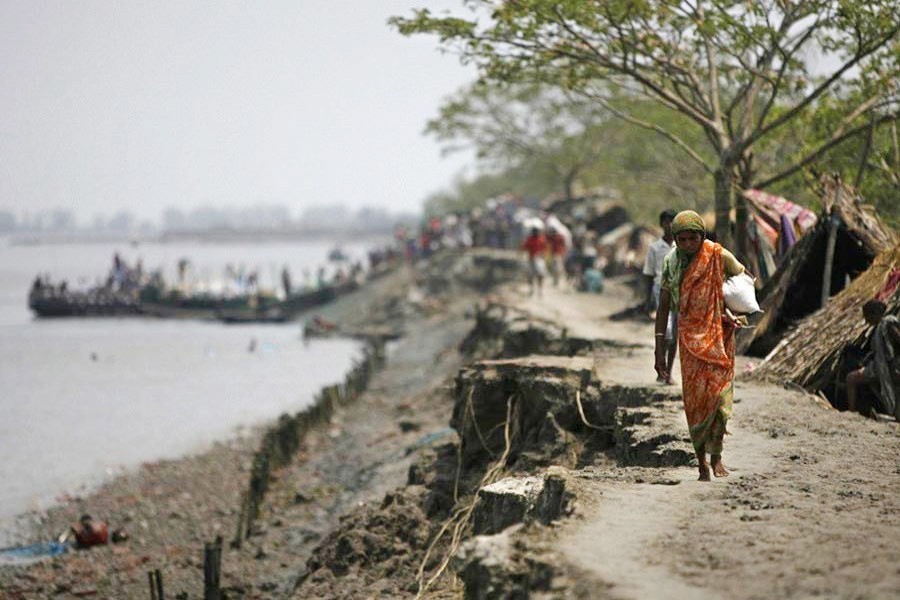Traditionally, the worst victims of natural calamities like storms, floods, tidal surges, downpours and droughts have been the poor. As usual, being increasingly exposed to the extreme climate-change-induced vagaries of weather, the poor have been experiencing even greater damage to their lives and properties than before. But the existing official financial support available to mitigate their losses is neither timely nor adequate. Also, any aid from international agencies is too small to meet their need. But since the disaster victims' needs are urgent, they cannot wait for the government assistance to arrive. Naturally, they try to tide over the crises on their own with whatever means they have at their disposal.
According to a report from an international research institute, the poor stricken by climate-induced disasters in rural Bangladesh annually spend around US$2.0 billion dollars to repair their destroyed properties and other infrastructures as well as to take various preventive measures against future calamities. This is around twice the amount of financial assistance the rural climate victims receive from the government and 12 times the aid channelled through international multilateral agencies to meet such emergencies. It only points to the extent of the damage the rural climate victims are subjected to and the insufficiency of the succour they get from the government and other external sources to address it. So far as the financial support from the government or aid agencies is concerned, there is no structured mechanism to deliver the assistance to those in need.
As reported in the last Wednesday's issue of this paper, a Sweden-based international body, Stockholm Environment Institute (SEI), came up with a search report that dwelt mainly on ways to make the 'finance for loss and damage' to the climate-affected poor operational. What the report further pointed out is that though with the worsening of the climate-change-induced disasters the demand for the financial assistance to address the victims' loss and damage is increasing, there is practically no arrangement as such in existence to meet the demand. What is there falls far short of what is required. Worse yet, the existing financial assistance regimes have funding procedures that are too complicated for the climate-vulnerable communities to access. Channelled mostly in the form of loans and projects, such assistances actually risk ensnaring the target communities in debt traps that basically defeats the very purpose of the help. Sometimes, the aid money even fails to reach the intended recipients. So, it calls for a change in the approach to deliver the financial assistance to the climate-vulnerable communities. In fact, the focus should first be more on devising a mechanism for delivering the financial assistance to the victims before determining the volume of the assistance to be provided.
Though the advanced industrialised economies of the world are the biggest contributors to climate change, they have so far gone back on their commitment to help the affected poor peoples in the developing and the least developed countries. At the last year's Glasgow Climate Summit (COP26), for example, low-and-middle income countries proposed establishing a Loss and Damage Finance Facility. But the wealthy nations did not agree. Given its urgency, the matter should be raised again at the upcoming UN Climate Change Conference (COP27) at Sharm El-Sheikh in Egypt. As one of the worst victims of climate change, Bangladesh should play a leading role at the COP27 in creating the earlier proposed Loss and Damage Finance Facility.


